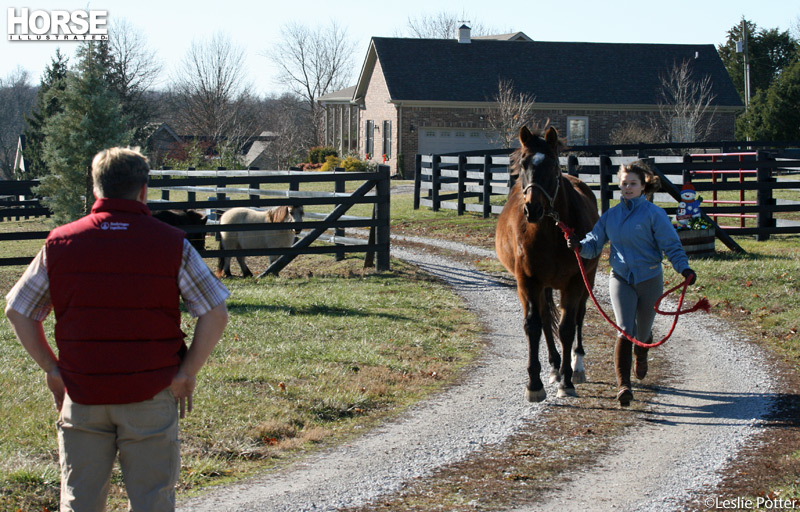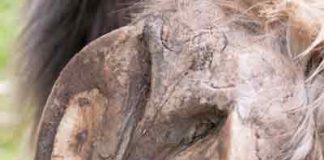In our Ask the Vet column, Dr. Lydia Gray answers your horse-health questions at horseillustrated.com/AskTheVet. Got a question for Dr. Gray? Send it to hc-editor@luminamedia.com and use subject line “Ask the Vet.”
Q: I’ve had my 10-year-old Quarter horse gelding for almost two years. A few months before I bought him, his previous owner gave him hock injections. He’s still a bit stiff in his back right hock. I don’t want to jump right into x-rays and hock injections, so I was wondering if there was anything else I could do to help him?

Have your vet perform a thorough exam to pinpoint the cause of your horse’s lameness.
A: I agree with you that jumping right into treatment may not be the best course of action. What I WOULD recommend, though, is having your veterinarian thoroughly examine your horse. By this I mean schedule an appointment to have a complete physical exam performed that includes a lameness exam. That way you’ll get an expert opinion about your horse’s “stiffness” as well as professional advice about the next step, which might be x-rays or might be something else. Think of it this way: just because, two years ago, your horse was given hock injections doesn’t necessarily mean that his hock joint is what’s bothering him now. In the long run, you may end up actually spending less time and money by working with your vet to diagnose the underlying cause for what you’re seeing now then formulating a plan to address this particular issue.
If your vet is able to identify that your horse’s right hock is indeed the source of his stiffness, there are still a number of options on the table. Depending on factors such as what you do with him (including the intensity, duration, and frequency of work), the day-to-day living environment in which he’s kept, the season of the year, and yes, even cost, your vet may offer up several treatment and management strategies. These could include injecting prescription medications directly into the joint, injecting prescription medications in the vein or muscle, non-steroidal anti-inflammatory drugs administered orally or topically, a regimen of physical therapy (such as heat/cold application, compression/pressure, etc) and specific instructions regarding turnout, work, shoeing, footing, and other elements that may have an impact on his comfort and soundness.
I firmly believe that a combination approach employing all the available tools at our disposal will deliver maximum joint health and result in the healthiest joint tissues in our horses. Good luck getting to the bottom of your horse’s stiffness and keep your options open!






